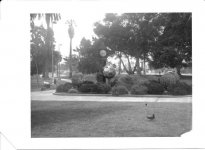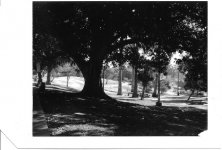Belle
Established
I took my first dive into LF photography. The attached photo was taken with a Graflex Crown Graphic 4X5 camera with a Polaroid 545 back with type 52 Polaroid. I haven’t tried film yet.
The results from the Polaroid seem a bit soft and dull. Not crisp or detailed. Is this because of the Polaroid or is it because of the lens? The lens that I have on is Graflex Optar 4.7/135mm. The photo was taken at f/16 @ 1/200 sec. ISO 400. The Polaroid has a vintage look about it that I like.
In order to achieve sharpness and detail, should I be getting a modern LF lens for my camera or will using film/transparency make a difference?
Your comments are appreciated. Thank you!
The results from the Polaroid seem a bit soft and dull. Not crisp or detailed. Is this because of the Polaroid or is it because of the lens? The lens that I have on is Graflex Optar 4.7/135mm. The photo was taken at f/16 @ 1/200 sec. ISO 400. The Polaroid has a vintage look about it that I like.
In order to achieve sharpness and detail, should I be getting a modern LF lens for my camera or will using film/transparency make a difference?
Your comments are appreciated. Thank you!





